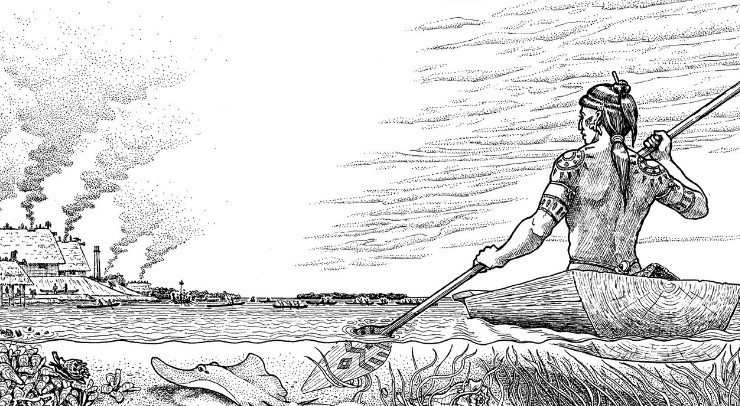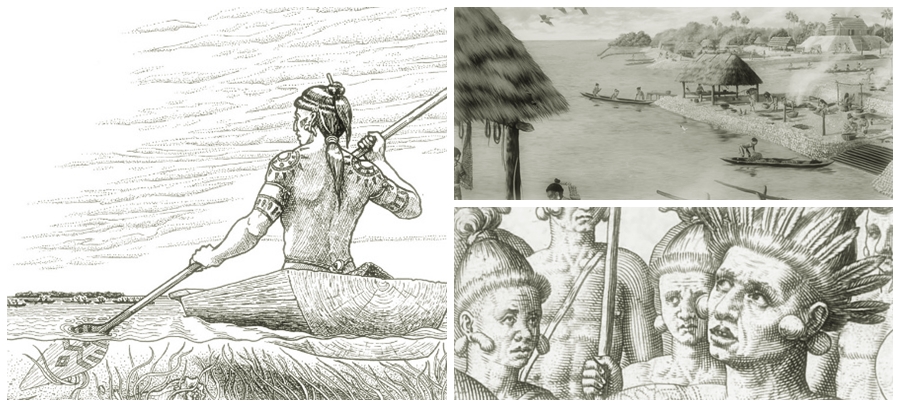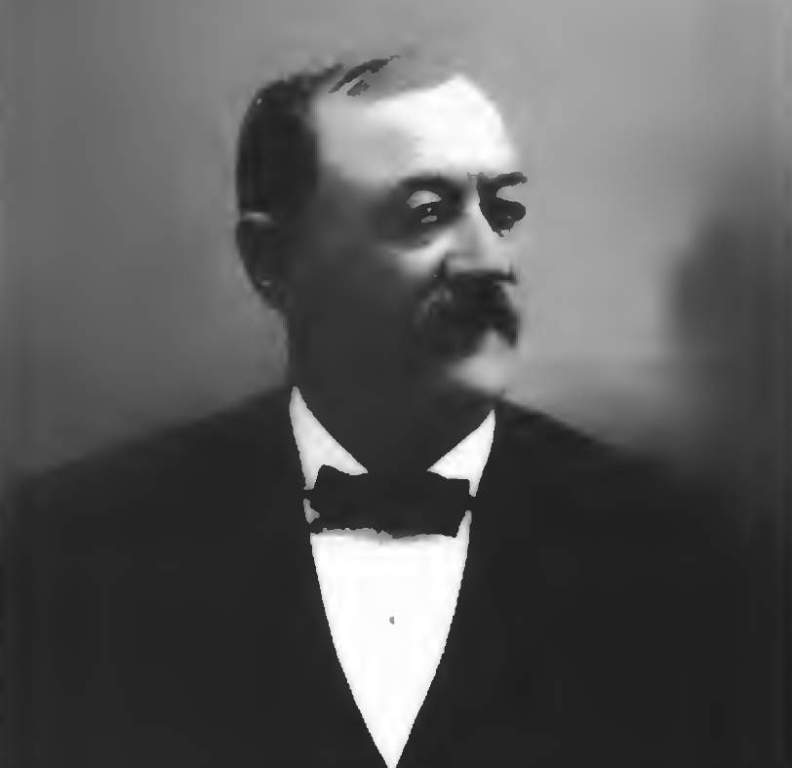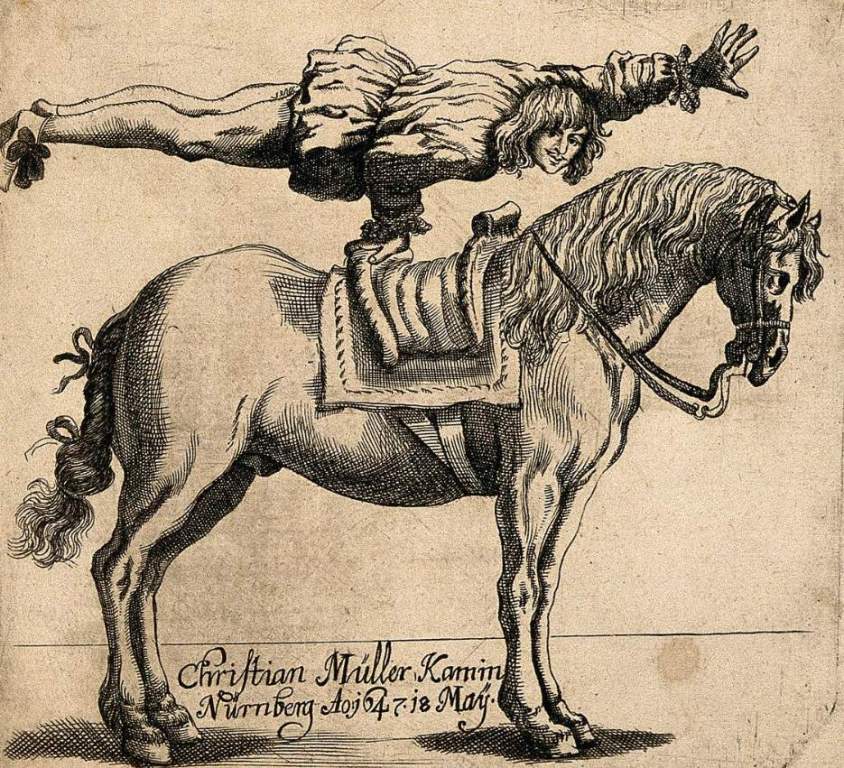The Calusa people were cannibals, pirates, master builders, and carvers. Did they, or didn’t they? Was it Muskogean-speaking people from the north or some unknown people, perhaps even migrants from the Caribbean or South America? Calusa people lived along the Gulf Coast of the Florida peninsula, from Tampa Bay to the Florida Keys.
The origin of these people is one of the mysteries surrounding them. It is believed that they were related linguistically to other Muskogeans of the Southeast Culture Area, but this is not known for sure. There is even speculation that the Calusa arrived in Florida from the sea due to their cultural similarities with native peoples across the Gulf of Mexico as well as other Southeast Indians, such as using blowguns for hunting and fighting and poison for fishing.

There is no doubt that the Calusa had seaworthy dugout canoes and communicated with the ARAWAK (TAINO) of the Caribbean. Cannibalism and human sacrifice were also traits typical of native peoples to their south. Cannibalism is practiced by some North American tribes for ritualistic reasons, such as gaining strength from eating an enemy’s heart. There were only a few South American tribes that consumed human flesh to survive.
However, the extent of cannibalism among the Calusa is unknown. When writing about Indians, early explorers sometimes exaggerated the extent of the practice. According to the Spaniard Hernando de Escalante Fontaneda, a captive among them in the mid-1500s, their name meant “fierce people,” whereas others claim it was derived from the Spanish name Carlos, after Charles V, the Holy Roman Emperor and king of Spain.
The Calusa tribe had a class system similar to that of Caribbean and Southeast tribes, with nobles, commoners, and slaves. Most slaves were captives from other tribes. Pirates have been referred to as the Calusa. Calusa already had gold and silver when the Spanish encountered them in the 1500s. During treasure runs from Mexico to Spain, some Calusa may have raided Spanish galleons. It is possible that outsiders have attacked ship crews. Whatever the case, we know for certain that the Calusa gathered the charges of ships destroyed in the tricky waters off their coast.
There is another tantalizing mystery surrounding the Calusa. They were the Indians of Key Marco, weren’t they? An archaeologist by the name of Frank Hamilton Cushing discovered on this small island in 1884 the remains of a highly developed culture, including seawalls, jetties, drainage basins, shell, bone, and tooth tools, as well as exquisitely carved wooden masks and animal figures. There is a possibility that these complex structures and beautifully crafted objects were the work of the early Calusa people. Early Spanish explorers and later Euroamerican settlers wrote about the Calusa, and what we know about them comes from their writings.
Other tribes have also transmitted down oral traditions concerning the Calusa. It is known that Juan Ponce de León, the man who claimed Florida for Spain and gave that part of North America its name (Florida is the Spanish word for “flowery”), visited the Calusa Indians in 1513; Diego Miruelo made contact with them in 1516; and Hernandes de Córdoba made contact with them in 1517. In 1521, Ponce de León landed among them again, intending to establish a settlement. After offending his hosts, he and his men were attacked; he was fatally wounded with an arrow, and his expedition was forced to return to Cuba.
From 1551 to 1569, another Spaniard named Hernando de Escalante Fontaneda was shipwrecked and held captive on the Calusa shores. During his experience, he recorded details of Calusa’s lifeways in his writings. A Spanish mission was established among the Calusa about the same time, but the Spaniards abandoned it before long without converting the tribe to Catholicism. Because of their trading connections with the Spanish, Calusa traders had been attacked by the British and their Indian allies. In 1745, many Calusa, along with APALACHEE and TIMUCUA, had been taken as slaves to the Carolinas.
To escape the raids, other Calusas went to the West Indies. In the Second Seminole War of 1835–42, descendants of the Calusa who stayed behind fought alongside the Seminole. A Calusa band called Muspa attacked Colonel William Harney’s camp in 1839, killing 18 of his men. It is unknown what happened to the Calusa after this period.
There is a possibility that the remaining tribal members migrated west with the Seminole or disappeared with them into the Everglades. It is possible that survivors followed their ancestors to Cuba. Like so many other things about this tribe, their ultimate fate remains a mystery.







